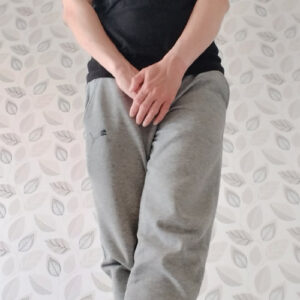Overactive bladder (OAB) is a common condition characterized by a frequent and urgent need to urinate, which can sometimes lead to involuntary urine leakage (urge incontinence). OAB affects both men and women and becomes more prevalent with age. While it can be disruptive, OAB is manageable with lifestyle changes, medical treatments, and behavioral therapies.
Symptoms
The primary symptoms of OAB include:
- Urgency: A sudden, strong urge to urinate that is difficult to control.
- Frequency: Urinating more than eight times in a 24-hour period.
- Nocturia: Waking up two or more times during the night to urinate.
- Urge Incontinence: Involuntary leakage of urine that occurs with a strong urge to urinate.
Causes
The exact cause of OAB is not always clear, but it can be related to:
- Nerve Damage: Conditions like stroke, multiple sclerosis (MS), Parkinson’s disease, or spinal cord injury can affect the nerves that control bladder function.
- Muscle Problems: The bladder muscles may contract involuntarily, leading to a sudden urge to urinate.
- Medications: Certain medications can increase urine production or affect bladder control.
- Underlying Conditions: Conditions like uterine prolapse in women or prostate enlargement in men can contribute to OAB.
- Idiopathic OAB: In many cases, there is no identifiable cause for OAB.
When to Seek Medical Attention
Consult a healthcare provider if you experience symptoms of OAB that significantly impact your daily life.
Self-Help Strategies
Several self-help strategies can help manage OAB symptoms:
- Bladder Training: Gradually increase the time between trips to the bathroom to train the bladder to hold more urine.
- Pelvic Floor Exercises (Kegels): Strengthen the muscles that support the bladder and urethra to improve bladder control.
- Fluid Management: Avoid drinking large amounts of fluids at once and limit caffeine and alcohol intake, as they can irritate the bladder.
- Dietary Changes: Avoid foods and beverages that can irritate the bladder, such as spicy foods, citrus fruits, and artificial sweeteners.
- Weight Management: Losing weight can reduce pressure on the bladder and improve OAB symptoms.
Medical Treatments
If self-help strategies are not sufficient, medical treatments may be necessary:
- Medications:
- Anticholinergics: These medications block the action of acetylcholine, a chemical that triggers bladder muscle contractions. Examples include oxybutynin (Ditropan), tolterodine (Detrol), and darifenacin (Enablex).
- Beta-3 Agonists: These medications relax the bladder muscle, increasing bladder capacity and reducing urgency. An example is mirabegron (Myrbetriq).
- Botulinum Toxin (Botox) Injections: Botox can be injected into the bladder muscle to relax it and reduce urgency and frequency.
- Nerve Stimulation:
- Percutaneous Tibial Nerve Stimulation (PTNS): This involves stimulating the tibial nerve in the ankle with electrical impulses to modulate bladder function.
- Sacral Nerve Stimulation (SNS): This involves implanting a device that delivers electrical impulses to the sacral nerves in the lower back to control bladder function.
- Surgery: In rare cases, surgery may be necessary to increase bladder capacity or correct underlying anatomical problems.
Investigations and Examinations
To determine the cause and severity of OAB, a healthcare provider may perform the following investigations:
- Medical History and Physical Examination: Evaluation of symptoms and risk factors.
- Bladder Diary: Recording fluid intake, urination frequency, and episodes of urgency and incontinence.
- Urinalysis: A urine test to rule out infection or other underlying conditions.
- Post-Void Residual (PVR) Measurement: To measure the amount of urine left in the bladder after urination.
- Cystometry: A test to measure bladder pressure and capacity.
Takeaway
Overactive bladder is a common condition that can significantly impact quality of life. However, with appropriate management strategies, including lifestyle changes, medical treatments, and behavioral therapies, individuals with OAB can effectively manage their symptoms and improve their overall well-being.
